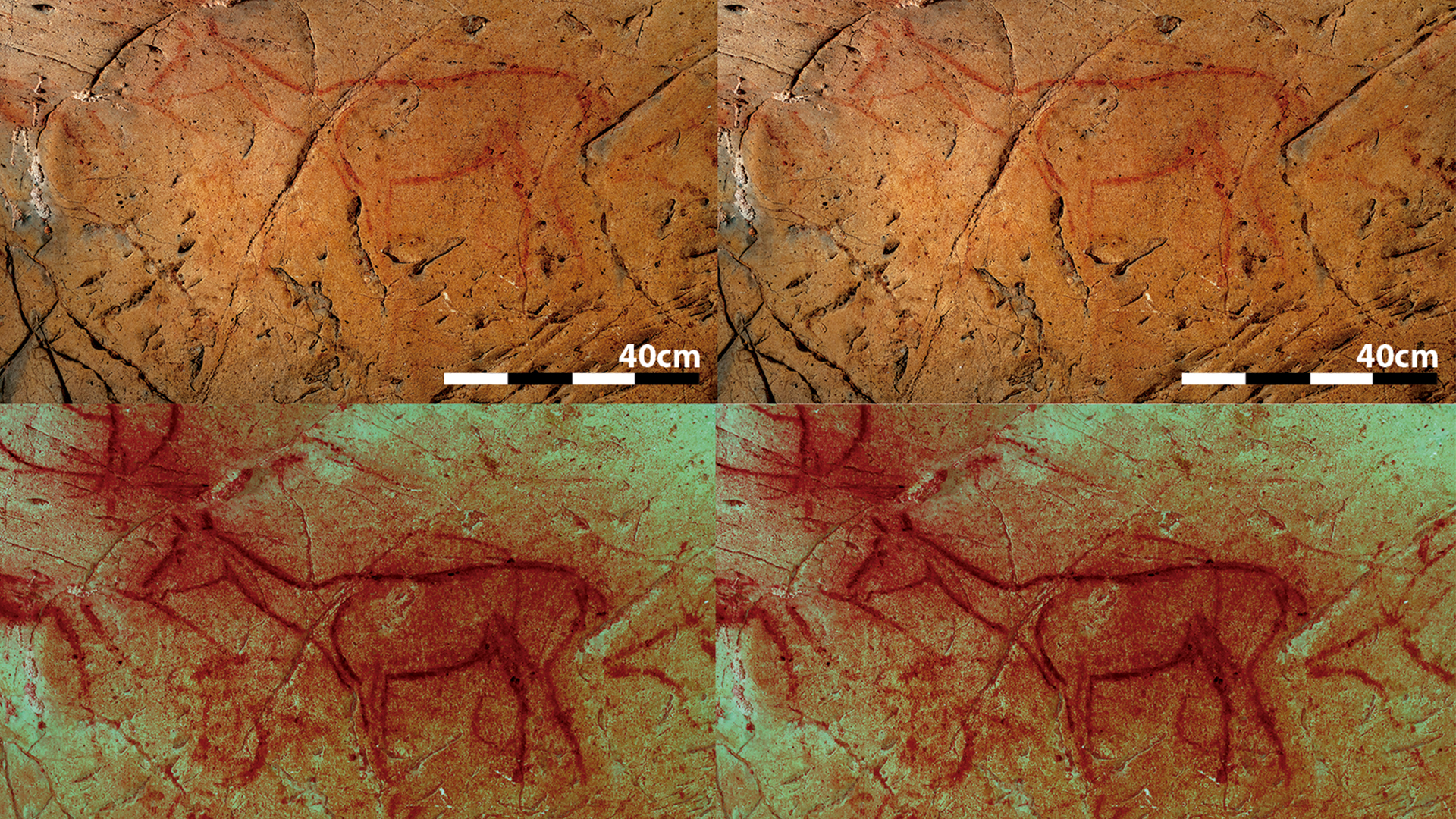Centuries-old technique reveals hidden '3D' animals in Paleolithic cave art
The hidden animals were revealed on cave walls in Spain with 'Magic Eye'-style techniques.

Using an unconventional, centuries-old method, researchers have identified hidden animal figures on the walls of a cave in Spain. The technique, called stereoscopic photography, dates back to the early 1800s but is perhaps best known for its use in the View-Master, the pre-VR viewer beloved by generations of kids.
Cave paintings are a well-known and long-standing artistic medium in Europe, dating back at least 40,000 years. Although archaeologists have studied this ancient art form for over a century, their focus has typically been on the two-dimensional features of the designs and, when recording the art, they have relied on sketches, tracings and photographs.
Recently, 3D recording and viewing methods have become popular among archaeologists. These methods capture more rock art detail than the 2D ones but are still typically viewed and studied as 2D images on a computer screen, which is not how the art's creators would have seen it.
A new study, published Aug. 17 in the journal Antiquity, changes how archaeologists view cave paintings, with stereoscopic photographs of art from the cave of La Pasiega in north-central Spain.
Raquel Asiain, an archaeologist and photographer at Complutense University of Madrid, and her colleagues devised a simple method for capturing the three-dimensional nature of the cave walls and the art on it.
Related: Pinwheel Cave rock art in California may depict hallucinogenic 'trance flower'
Pairs of high-resolution photographs taken 2.5 inches (63.5 millimeters) apart — the average distance between an adult's two pupils — can be viewed together, forcing the brain to perceive a 3D image. While stereoscopic photo pairs are best seen with a viewing device, the hidden 3D image can also be spotted with the naked eye, similarly to those in the trippy "Magic Eye" designs of the 1990s.
Get the world’s most fascinating discoveries delivered straight to your inbox.
Over 700 depictions of animals, symbols, dots and lines cover the walls of La Pasiega, which was first discovered in 1911. But through their systematic study using stereoscopic photography, Asiain and colleagues discovered three previously hidden animals: two horses and one aurochs, an extinct cattle species.
The horses are easily viewed in high-resolution images that the researchers posted to Flickr. The digitally enhanced images reveal a horse below the deer image in the center, as well as the mane, neck and chest of another horse on the left. This latter horse is situated so that its head rests in a concave area of the cave wall, while the chest is in a convex area, enhancing the three-dimensionality of the animal.
Using 3D glasses, or even just by slightly crossing your eyes, it is easy to see the undulating character of the cave walls just as someone tens of thousands of years ago might have seen it.
"In Paleolithic cave art, artists used the natural shapes of caves to create their paintings," Asiain told Live Science in an email. "The need to preserve that 3D perception of the caves was one of the reasons that inspired me to use these stereoscope images." With their high photographic quality, the images let the researchers see the art in "real" 3D, not simulated with 3D scanners.
"The technique these authors employ is useful for reminding us how technically skilled these artists were and for giving us insight into the creative process," April Nowell, an archaeologist at the University of Victoria in Canada who was not involved in the study, told Live Science in an email. Publishing the stereoscopic images means the general public can come much closer to experiencing the art as people would have in the past, Nowell said, but "you are still missing the sound of dripping water, the cool dampness of the air."
Asiain remains fascinated with the evolution of the cave artists' techniques over time, particularly as "those artists began to understand the rock as another element of painting." She plans to incorporate additional methods in the future to more fully understand Paleolithic cave art, such as whether ancient artists manipulated and modeled the rock, perhaps through carving, to create figures in 3D.

Kristina Killgrove is a staff writer at Live Science with a focus on archaeology and paleoanthropology news. Her articles have also appeared in venues such as Forbes, Smithsonian, and Mental Floss. Kristina holds a Ph.D. in biological anthropology and an M.A. in classical archaeology from the University of North Carolina, as well as a B.A. in Latin from the University of Virginia, and she was formerly a university professor and researcher. She has received awards from the Society for American Archaeology and the American Anthropological Association for her science writing.
 Live Science Plus
Live Science Plus






